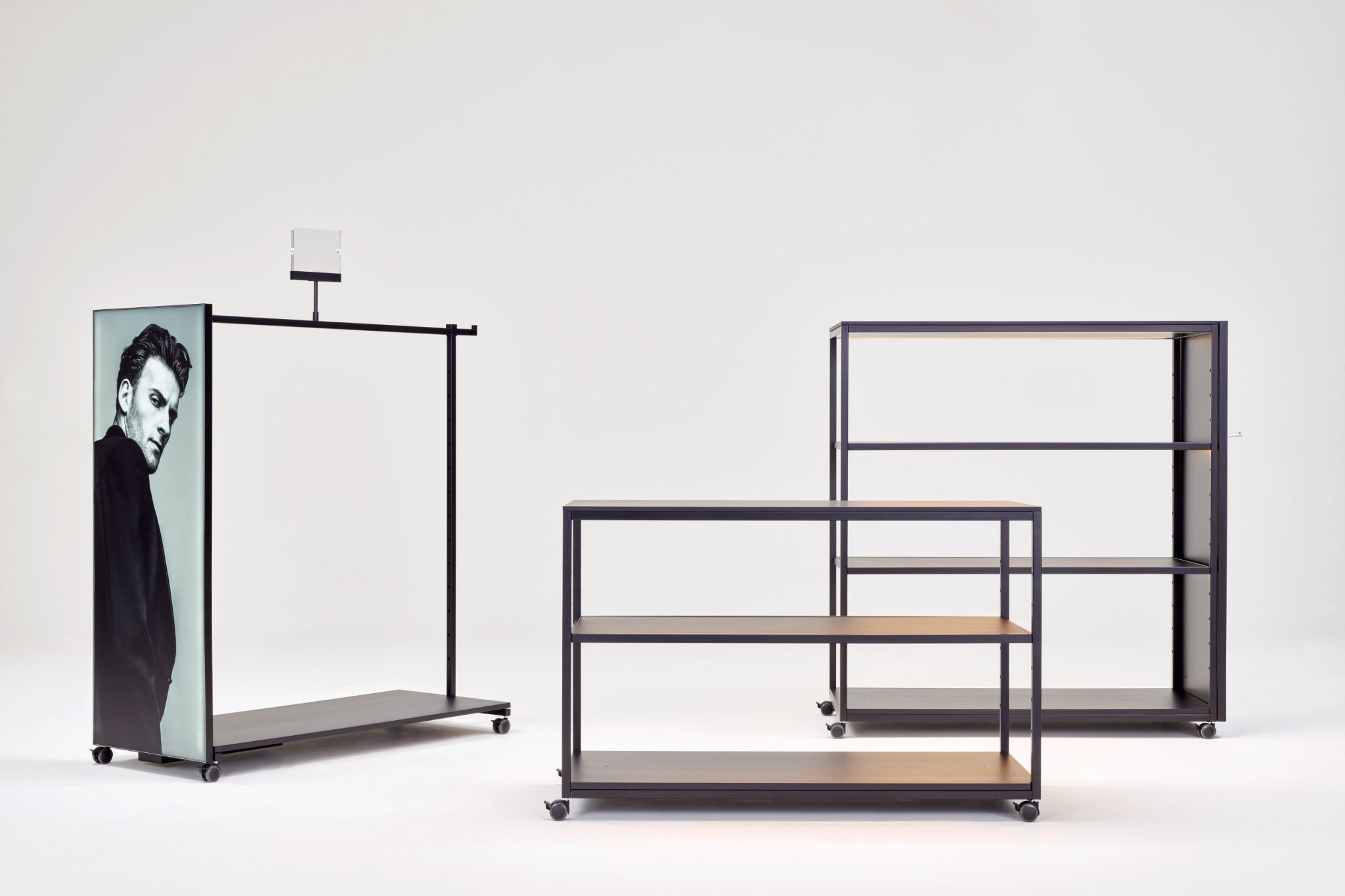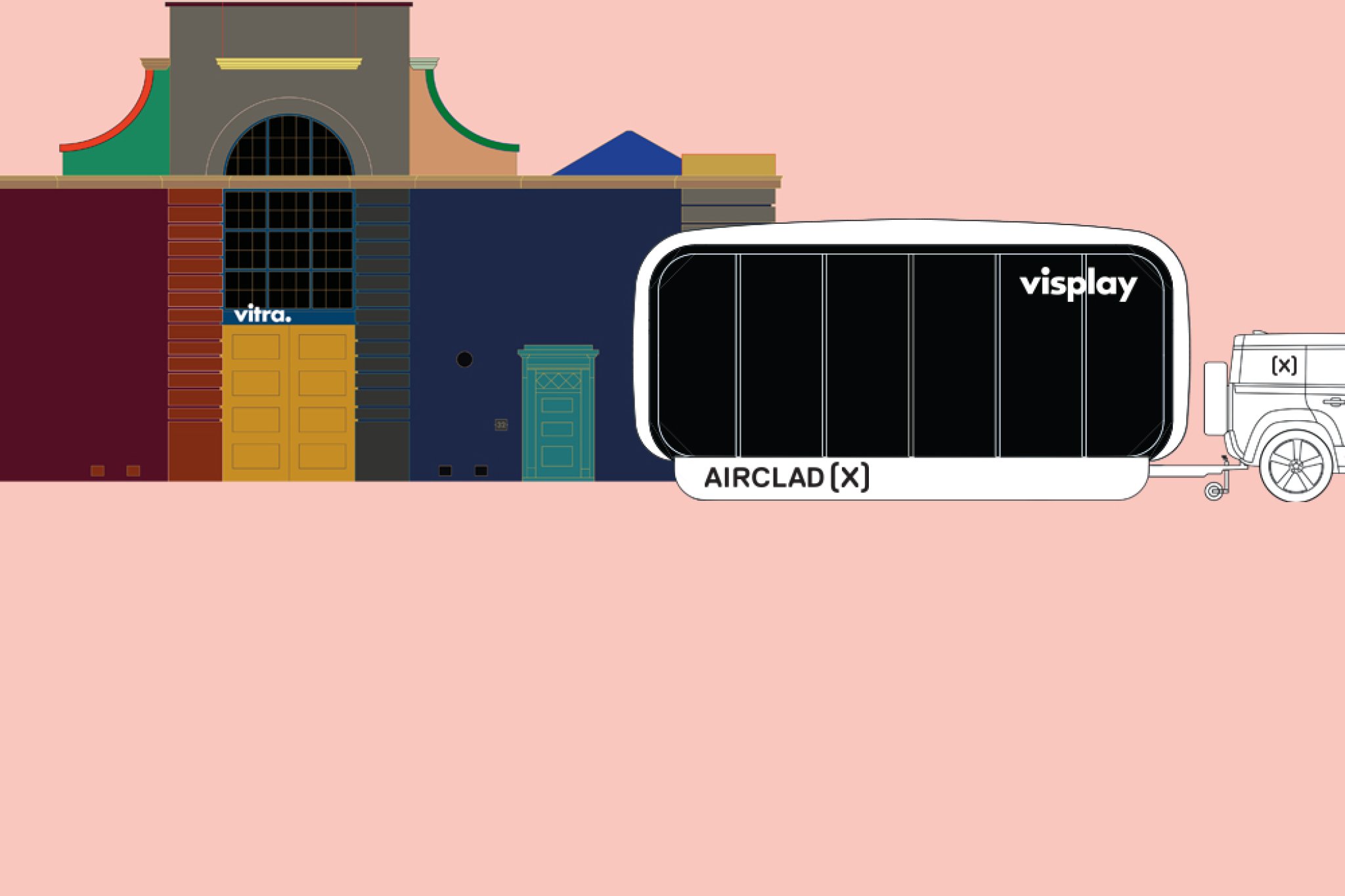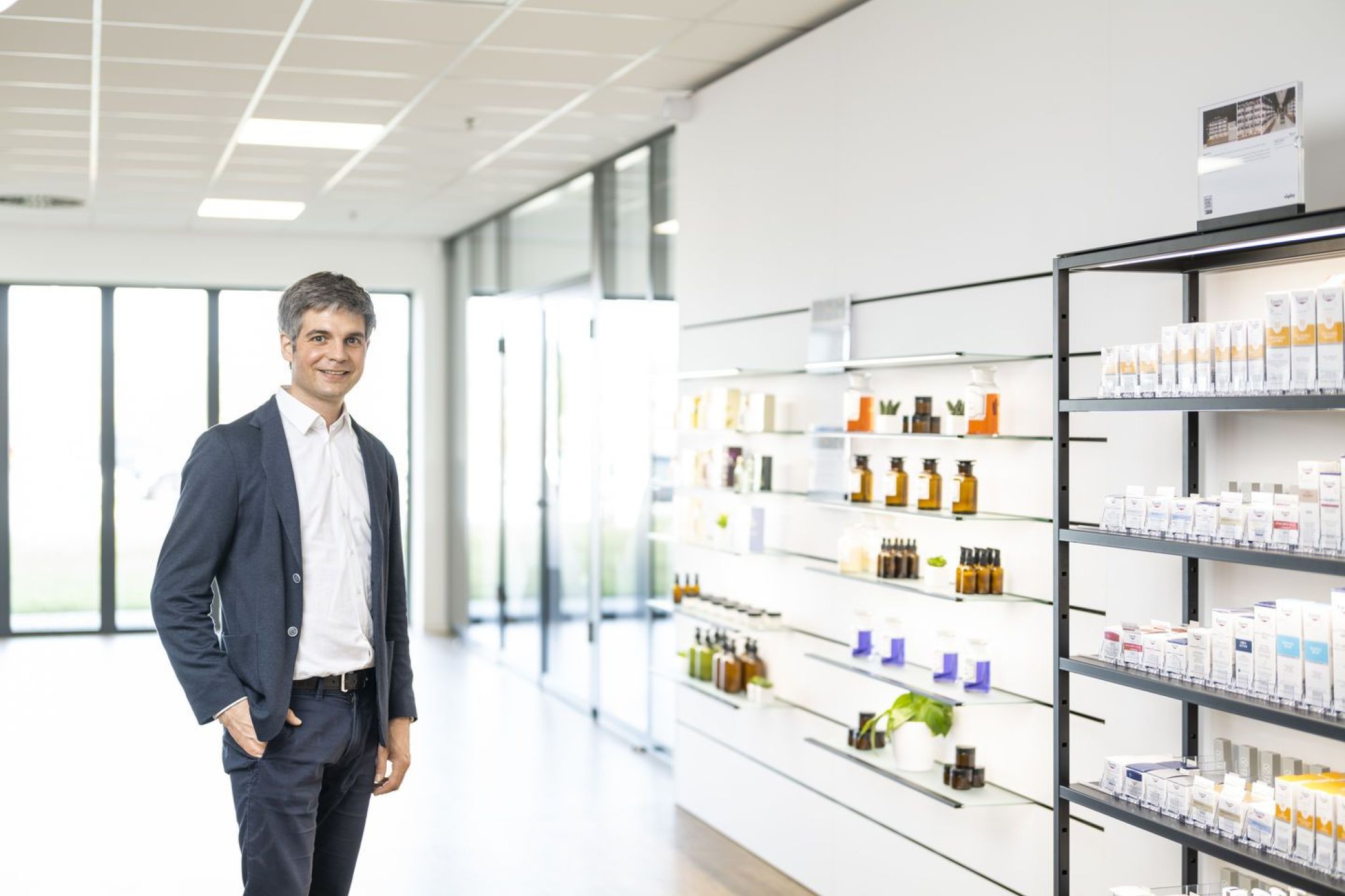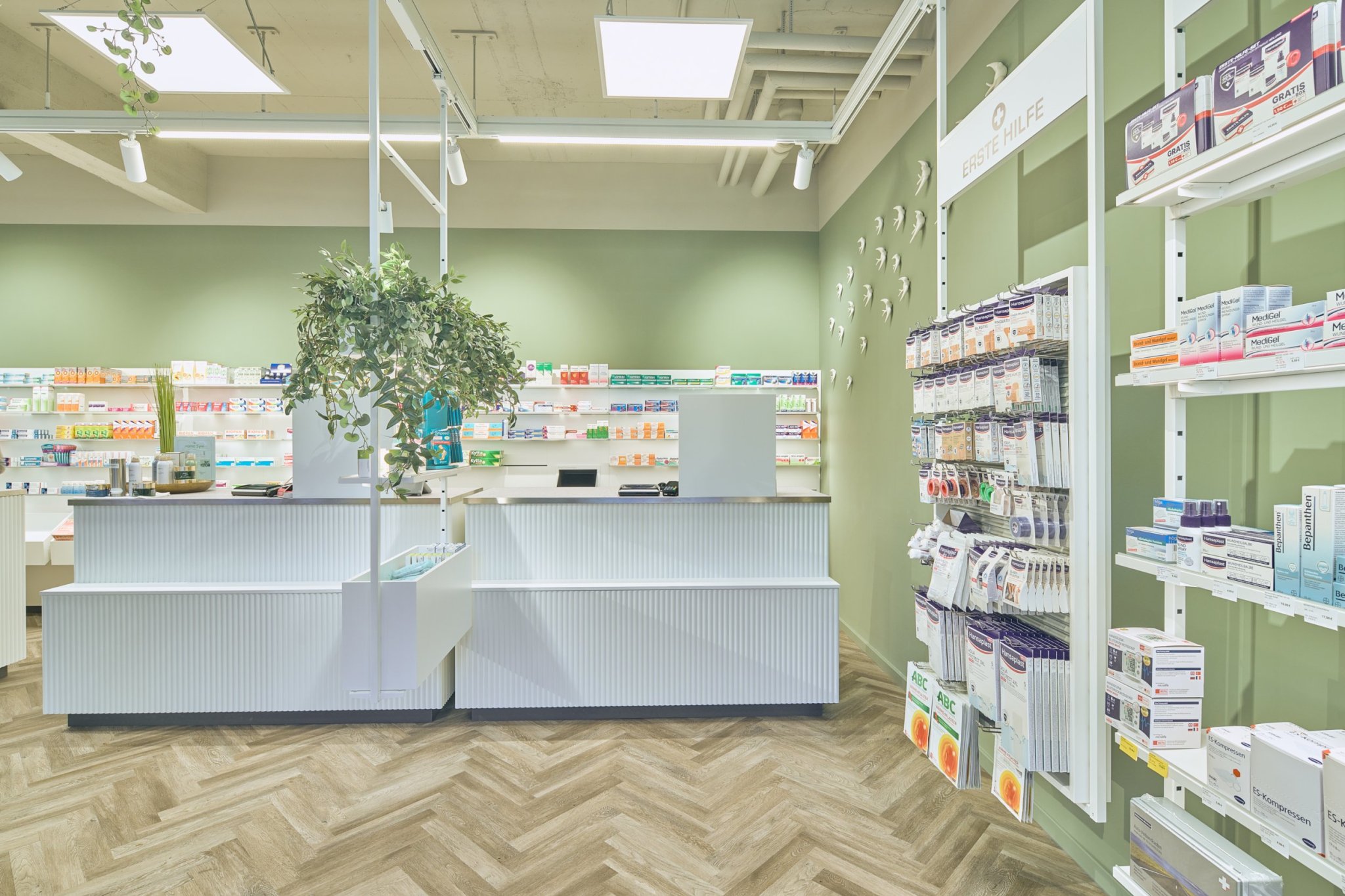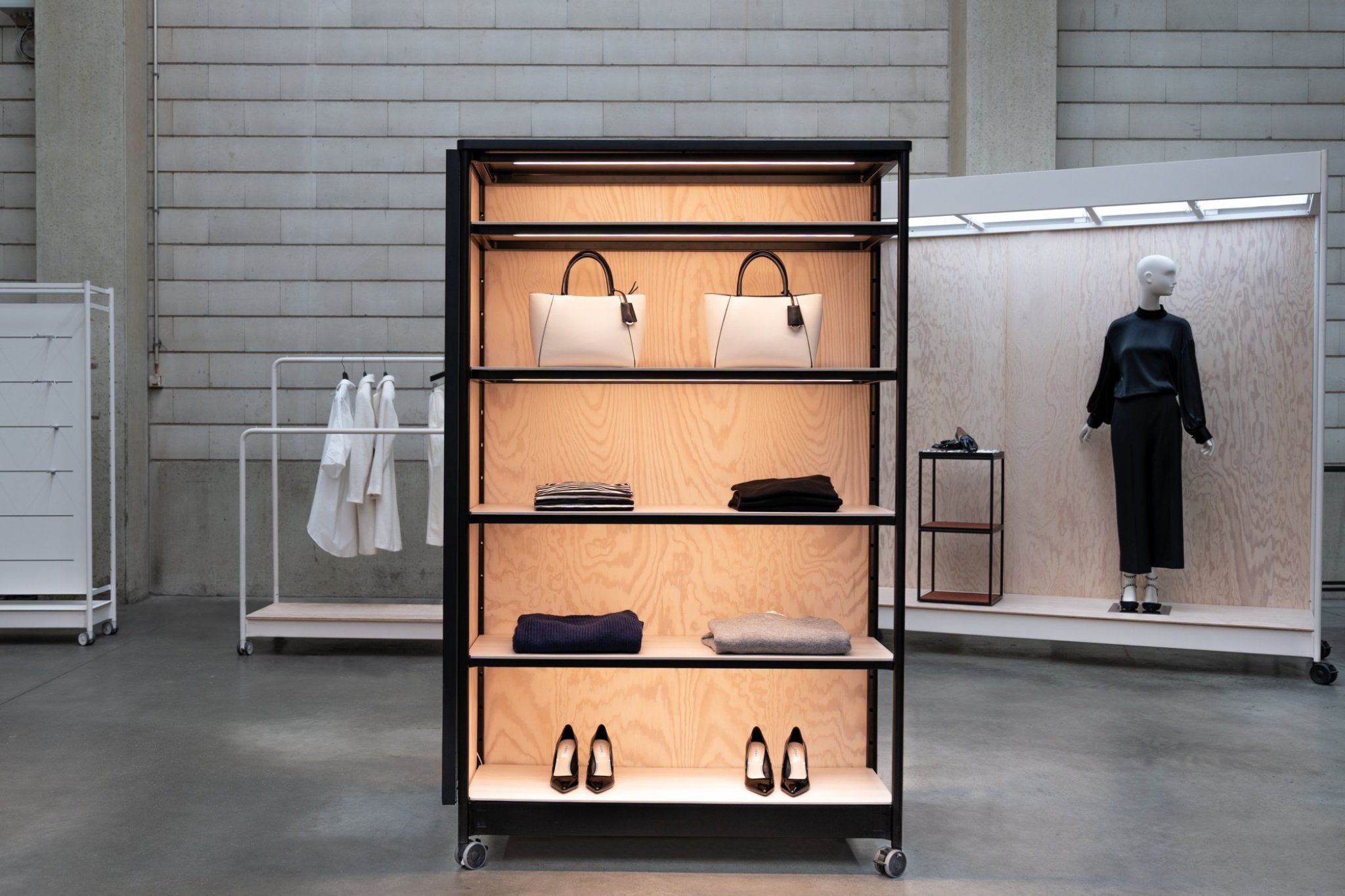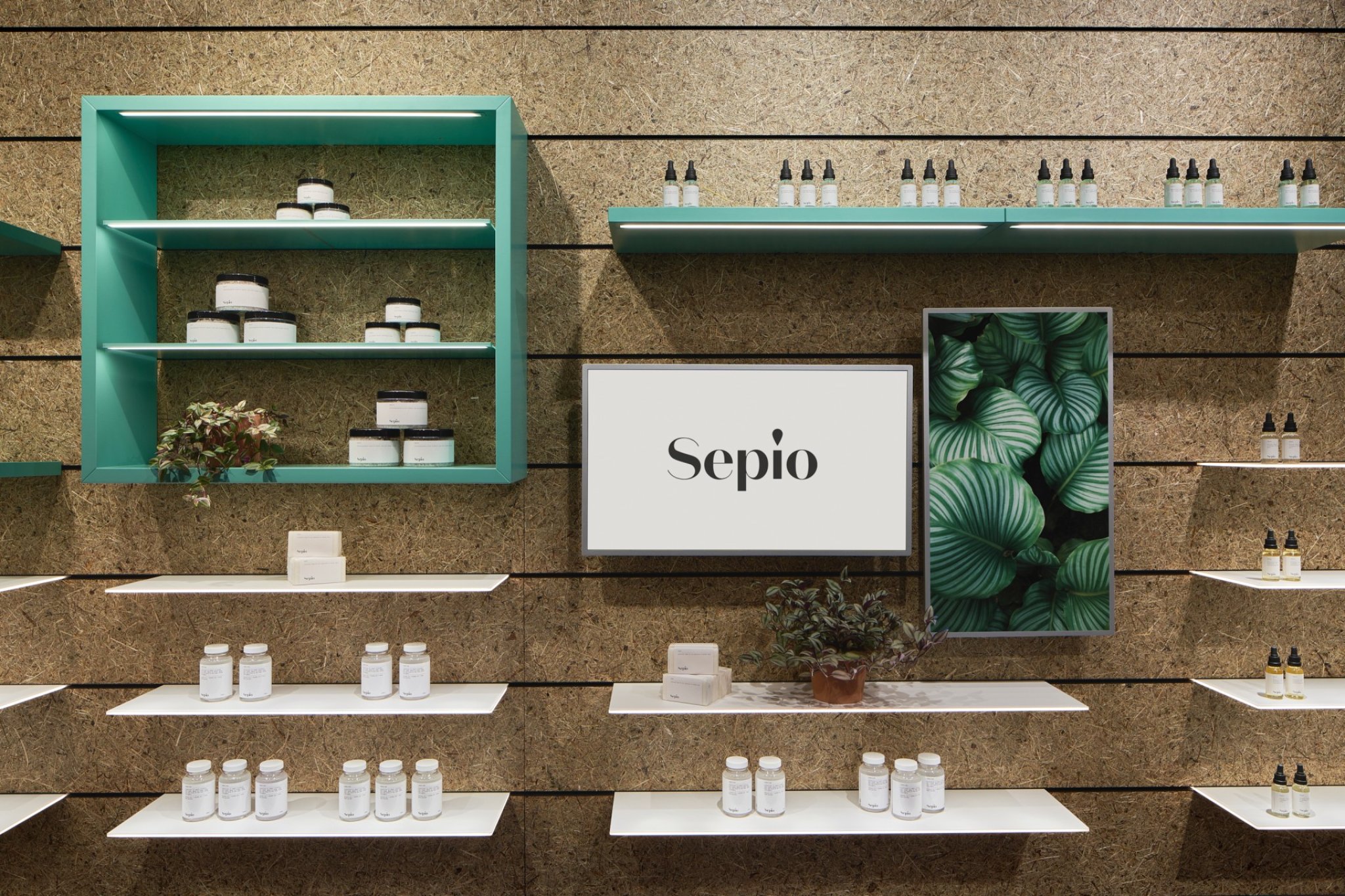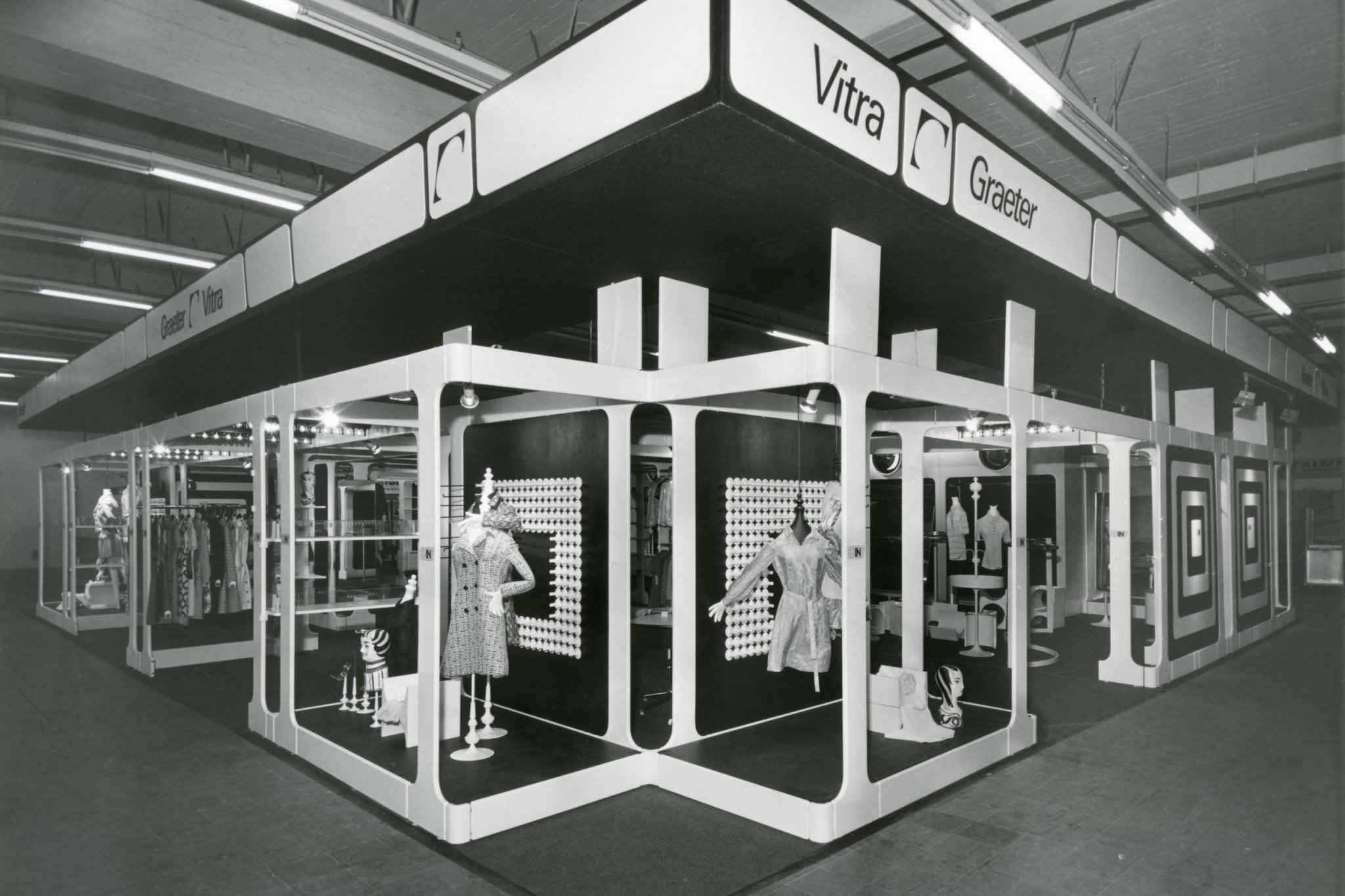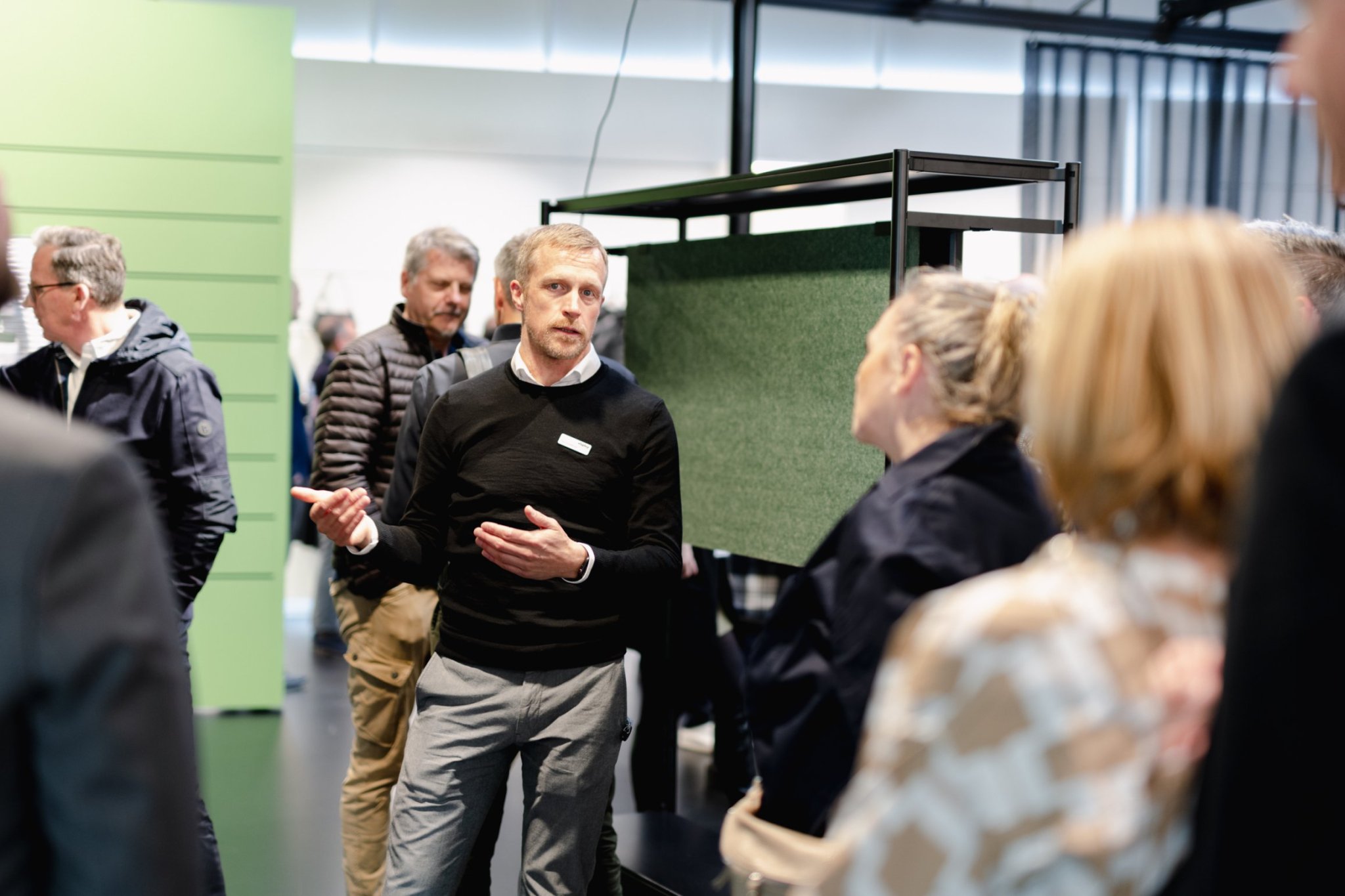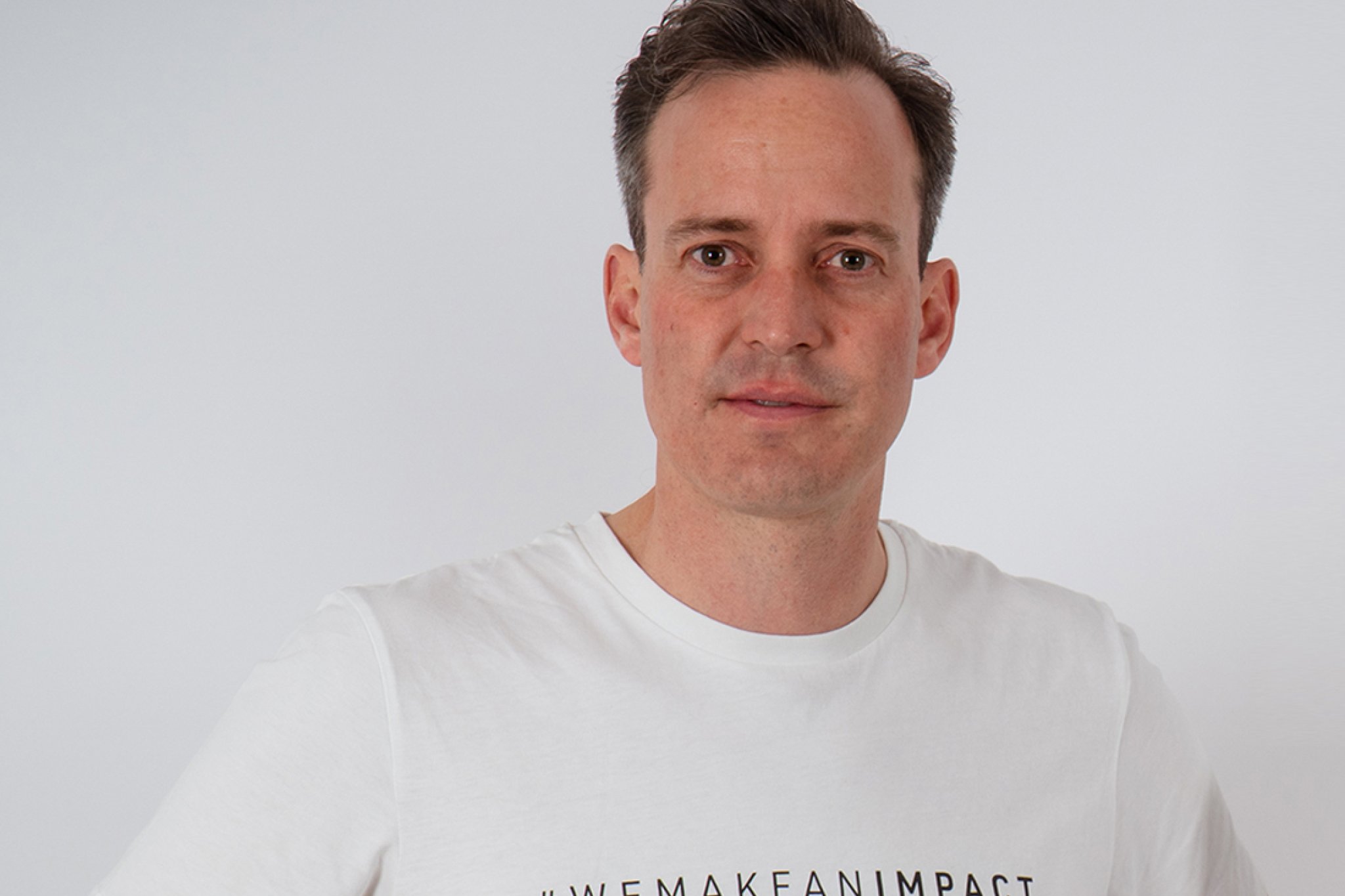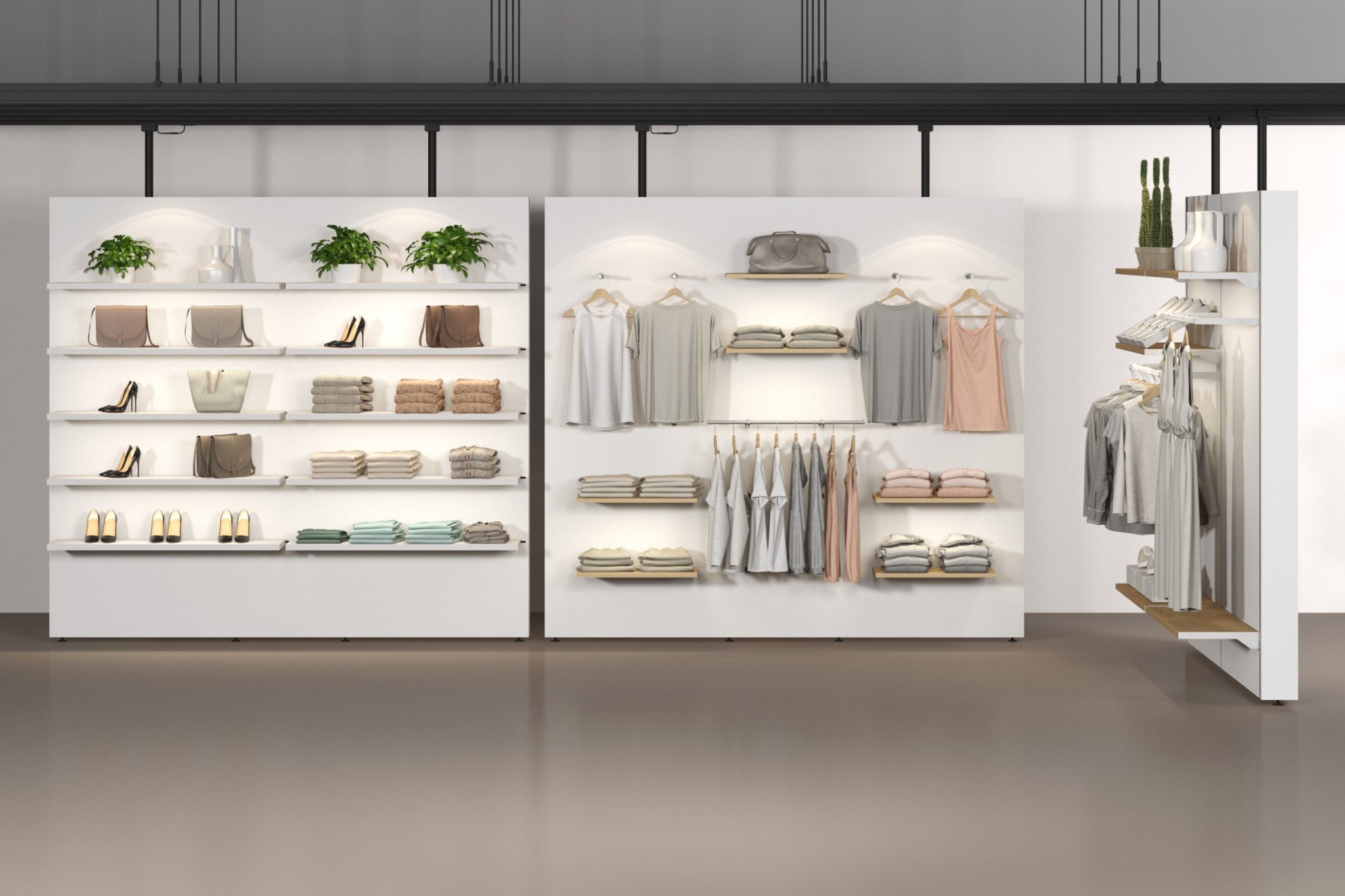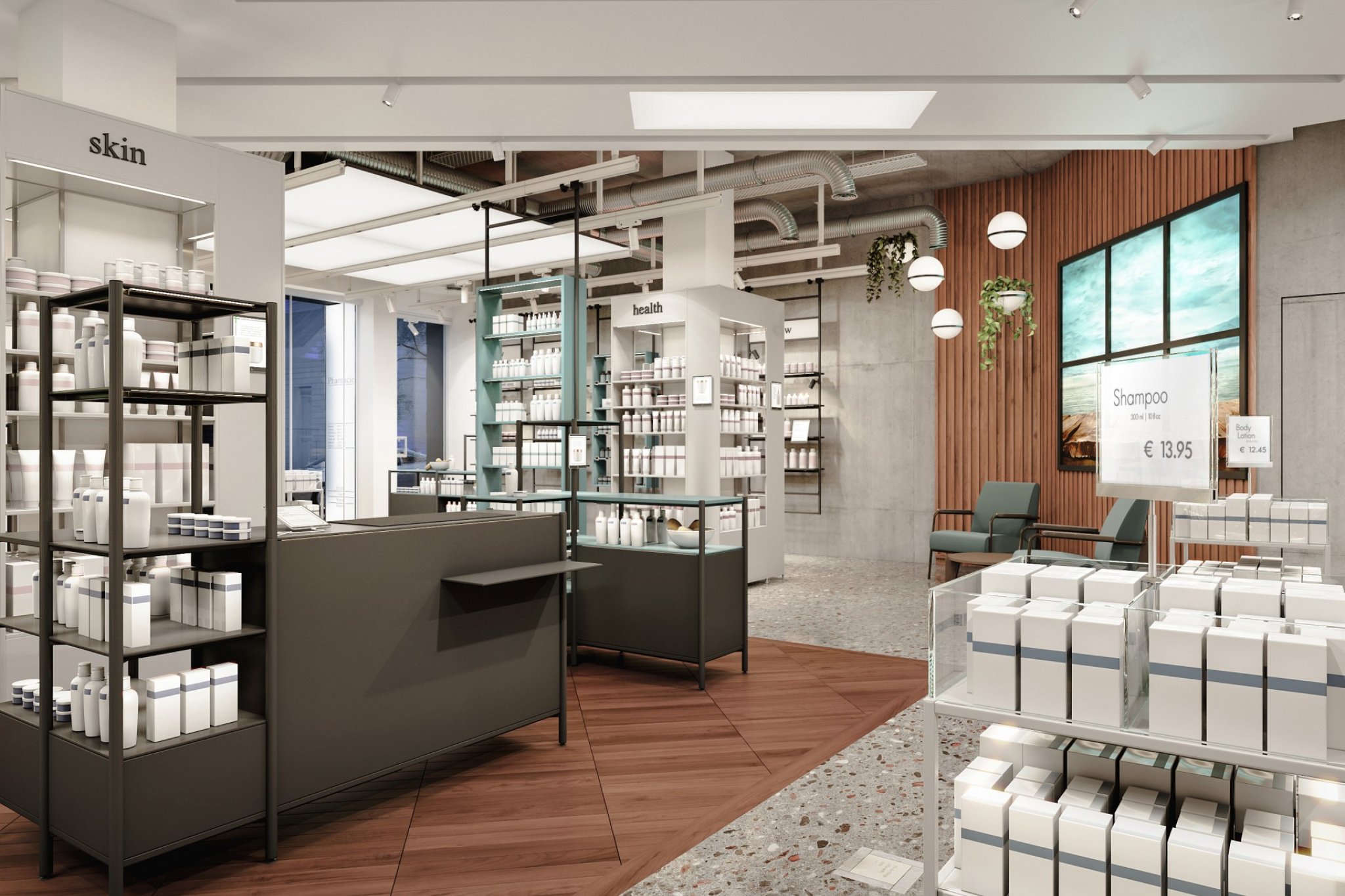Interview on the development of future-oriented pharmacies
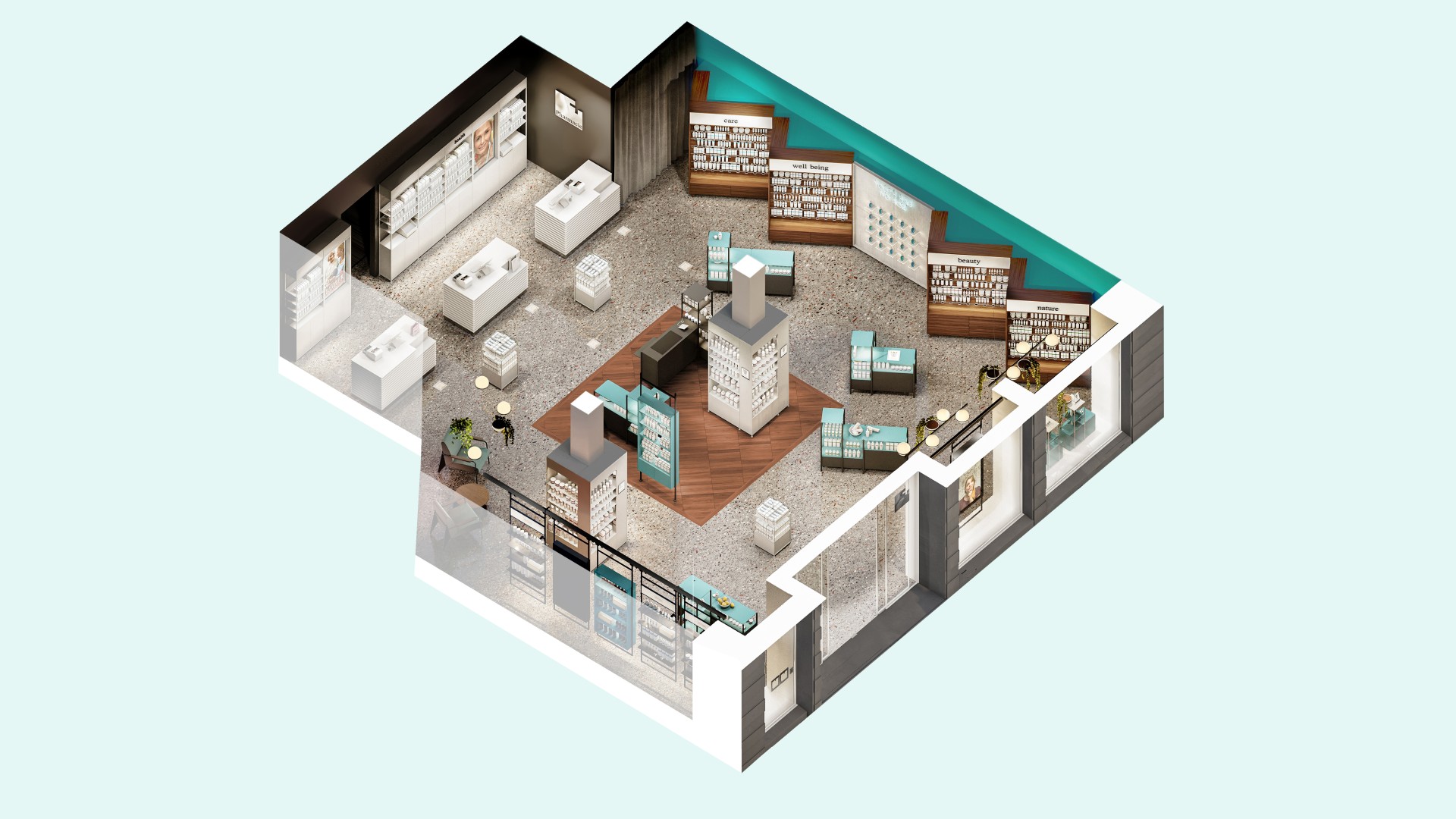
The interior designer has been running her own office, Reich Innenarchitektur, since 2004 and has gathered a wealth of experience and know-how with countless retail and office projects as well as private interior fittings. Together with BD Rowa, an automation partner specializing in pharmacies, Sophie Reich developed the planning for the fictitious "Future Pharmacy" and designed the associated renderings.
Visplay: Ms. Reich, let's go straight into medias res - what is the most significant difference between the Future Pharmacy that you designed as the ideal pharmacy idea and the pharmacy as we have always known it?
As far back as we can remember, pharmacies have been the classic places to go when we need medication. But for some time now, more has been added: We also want to be advised in the pharmacy on health, body care and wellness and be served with the corresponding products. Pharmacists have earned the corresponding trust with their work "in the old days" and now they can profit from it. The orientation towards these new customer needs also involves the pharmacy as a salesroom: it must create a positive shopping experience.
Visplay: Could you elaborate on that?
Yes, theoretically, thanks to automated processes, the modern pharmacy has more freedom to use sales space in its own sense. In addition to classic pharmacy operations, this can include events on seasonal topics such as travel vaccinations, allergies, cold season or vaccinations, test offers for PCR or blood pressure measurement days, for example, and much more. To implement this, the furnishings must be flexible, and it must be possible to assemble and disassemble superstructures quickly and easily.
Visplay: Is there not then a danger that an institution can quickly become provisional and inconsistent?
To avoid this, the room must radiate competence and value. This is helped by furniture with which different material and colour concepts can be realized and which manages to bring together tradition and modernity. The former classic, individual pharmacy design is being replaced by sustainable system furniture that can be adapted to changing needs. The only important thing is that these do not make the furnishings look like a "take-away shop".
Visplay: For Visplay, you designed the model of a "Future Pharmacy". What are its main features?
Designing a fictional pharmacy was a great job, but also a big challenge. The salesroom is about 150 square meters, plus back-office and ancillary rooms, all on the ground floor with 3 shop windows. I have placed emphasis on a feminine design and equally feminine colours. This makes it possible to clearly stand out from conventional pharmacies and create a unique selling point. After all, around 90% of customers who spend longer in pharmacies are women. However, because there are only a few pharmacists who have realized this, there are correspondingly few pharmacies whose design specifically addresses the needs and tastes of women. However, many male and female pharmacists also see shop design as something very technical and would probably like to see softer and more emotional variants than black, grey or silver. In any case, in the "Future Apotheke", wall and structure systems from Visplay serve as elements for a high-quality and yet flexible presentation of goods that fulfil these wishes. Modern goods transport systems are used in the checkout area. This is what a modern pharmacy could look like today, offering its customers a contemporary shopping experience. But of course there are countless possibilities that also fit specific needs. In this respect, the "Future Pharmacy" is an example intended to inspire.

